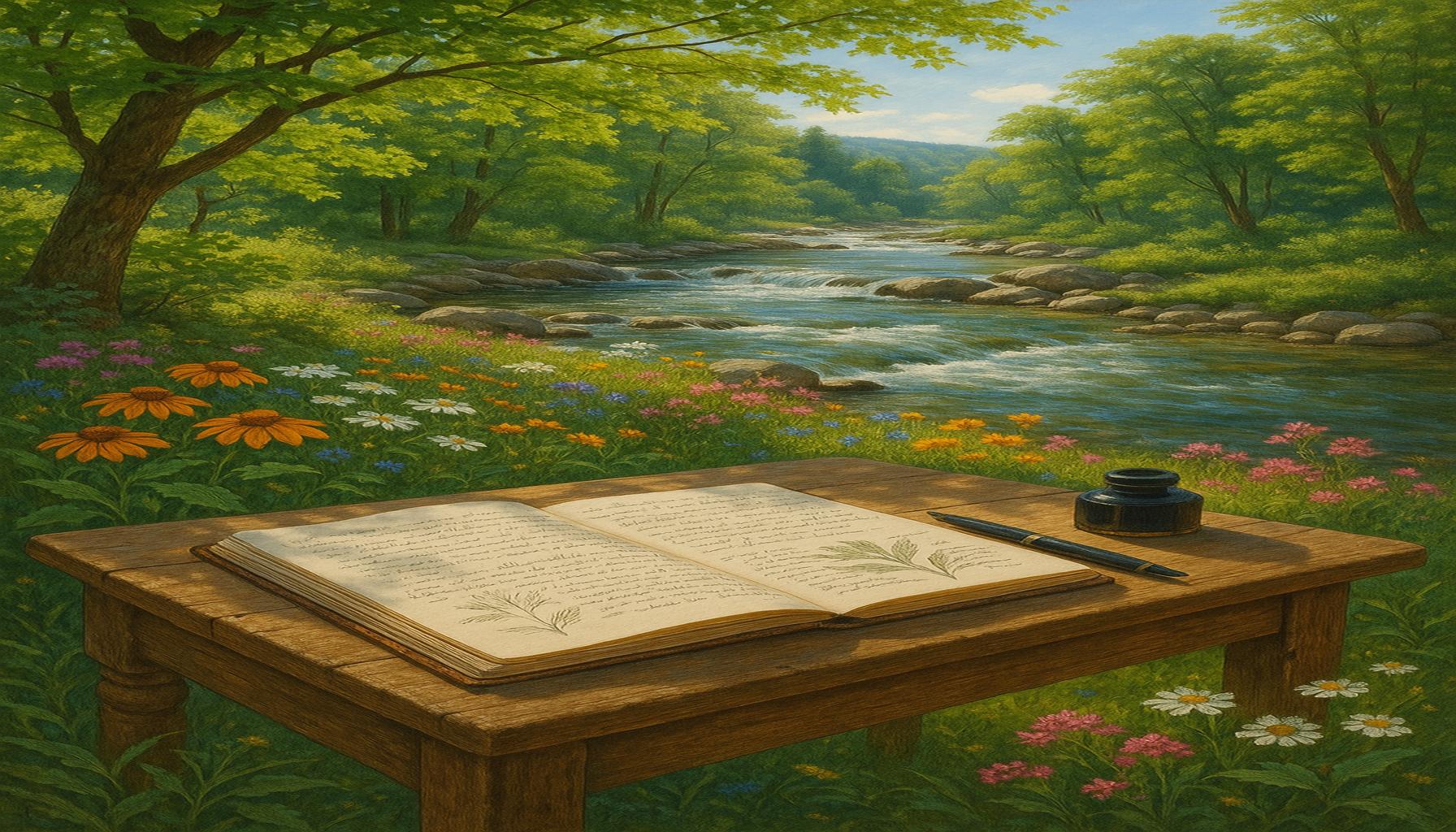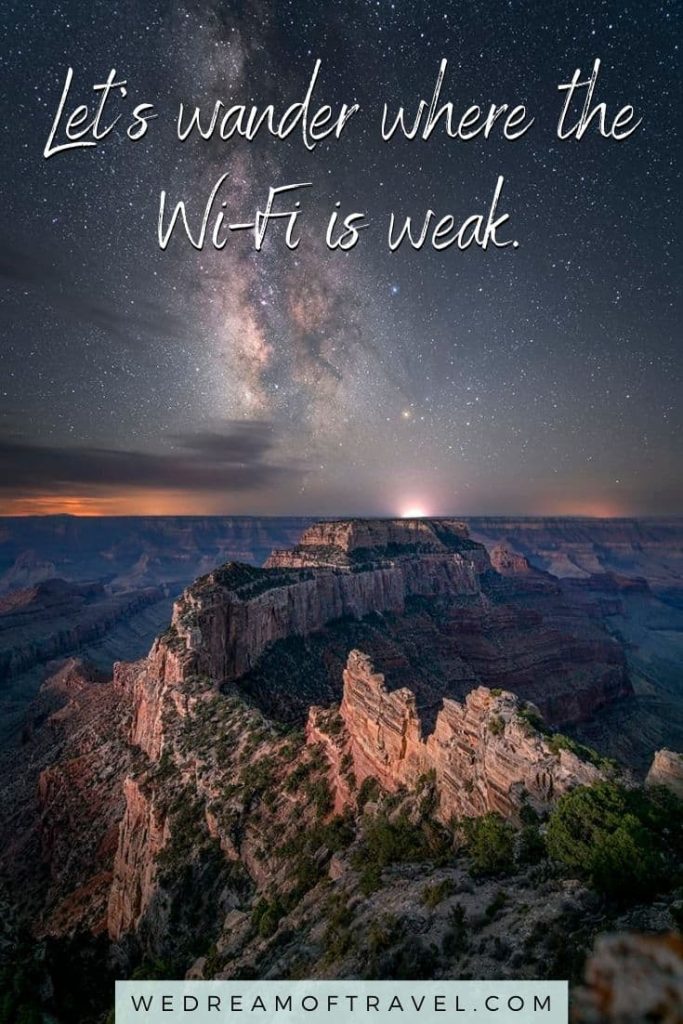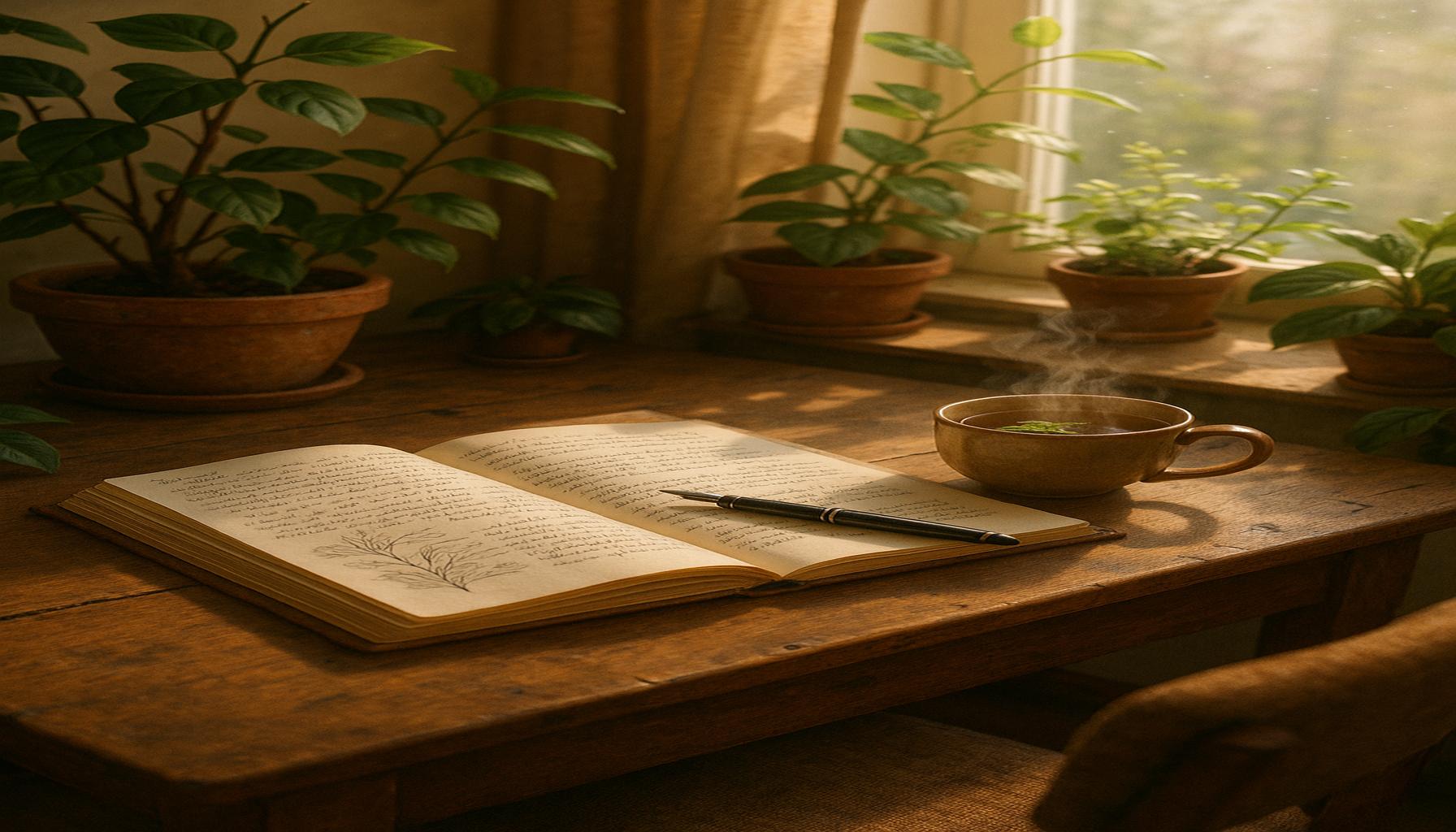Writing and Nature: Capturing the Beauty of the Natural World in Words

The Enduring Connection Between Writing and Nature
The relationship between writing and nature is intrinsically woven into the fabric of literature, echoing through centuries as authors strive to articulate their observations and feelings about the environment. From the majestic peaks of the Rocky Mountains to the serene shores of the Pacific, nature has inspired countless literary works, fostering a dialogue between humanity and the world around us. This exploration aims to delve into the multifaceted portrayals of nature across various writing styles, highlighting how different authors illuminate its splendor.
Nature Poetry
In the realm of nature poetry, writers often employ vivid imagery and concise language to capture ephemeral moments in the natural world. For instance, Walt Whitman’s expansive verses in “Leaves of Grass” celebrate the interconnectedness of humanity and the earth, showcasing a profound reverence for life in all its forms. Similarly, Mary Oliver invites readers to observe the intricacies of the natural world, as seen in her poem “The Summer Day,” where she reflects on the beauty of a grasshopper and prompts readers to ponder their purpose within that beauty. Here, poetry transforms into a vessel for introspection, encouraging a deeper emotional engagement with nature.
Nature Essays
Transitioning to the genre of nature essays, writers like Rachel Carson have paved the way for environmental consciousness through their compelling narratives. Carson’s “Silent Spring” serves as a significant wake-up call about the dangers of pesticide use, illustrating the fragile balance within ecosystems. By combining scientific facts with poignant storytelling, she inspires readers to reconcile their relationship with nature, ultimately urging them to become stewards of the earth. This tradition continues, as contemporary writers such as Bill McKibben emphasize climate change, using personal anecdotes and rigorous research to galvanize action and awareness about environmental issues.
Fiction
In fiction, landscapes often transcend mere backdrop to become vital characters that shape the narrative. John Steinbeck’s “East of Eden” exemplifies how setting influences the story’s emotional landscape, where the Salinas Valley itself reflects the duality of human nature, mirroring themes of struggle and redemption. Through rich descriptions of agricultural life and natural beauty, Steinbeck invites readers to explore how environment interacts with personal development, weaving a narrative that celebrates both the beauty and challenges found within nature.
Beyond mere description, writers harness nature’s themes of transience, growth, and connection to create a bridge between the physical world and human experience. Each carefully chosen word serves as a lens through which readers can engage with the nuances of flora, fauna, and shifting seasons. Thus, the act of writing about nature transcends mere artistic expression; it becomes a form of communication that fosters appreciation, contemplation, and even activism.

As we strive to understand the techniques employed by writers to depict the beauty of the natural world, it becomes evident that these methods can significantly enhance one’s own ability to convey nature’s majesty. Through examples found in poetry, essays, and fiction, readers and writers can alike deepen their understanding of our relationship with nature, encouraging further exploration and a thoughtful engagement with the world that surrounds us.
DISCOVER MORE: Click here to dive deeper
Illuminating Nature Through Diverse Literary Genres
The richness of the relationship between writing and nature can be further explored through various literary genres, each offering unique perspectives and techniques to express the beauty of the natural world. Writers choose different mediums to harness their creativity, producing vivid landscapes that resonate with readers in profound ways. While poetry and essays are vital forms of expression, other genres, like travel writing and creative non-fiction, also play instrumental roles in capturing the essence of nature’s majesty.
Travel Writing
Travel writing stands out as a genre particularly focused on geographical exploration and the wonders of diverse landscapes. Authors like Pico Iyer have captivated audiences with their reflections on the connection between place and identity. In his essays, Iyer artfully describes his encounters with nature while drawing connections to the human experience. By weaving personal anecdotes with observations about the environment, he enriches readers’ understanding of each location’s spirit. Iyer’s work encourages the notion that travel is not merely about visiting new places but engaging deeply with the natural world.
In the United States, travel writers often explore iconic landscapes like the Grand Canyon or Yellowstone National Park. These distinct locations evoke awe and curiosity, inviting writers to reflect on their significance. Here’s how travel writing captures the essence of nature:
- Descriptive Language: Vivid descriptions of sights, sounds, and smells transport readers to far-off places.
- Personal Narratives: Writers share their emotional responses to landscapes, revealing how these experiences shape their understanding of the world.
- Cultural Context: Travel writers often explore the intersection between people and nature, discussing local customs and histories intertwined with the environment.
Creative Non-Fiction
Creative non-fiction serves as another powerful form of writing that blends factual reporting with literary narrative. Notably, authors like Annie Dillard in “Pilgrim at Tinker Creek” and Barry Lopez in “Arctic Dreams” illustrate profound truths about nature through storytelling that is both informative and poetic. Dillard’s observation of the creek’s ecosystem unveils the delicate balance of life, while Lopez showcases the rugged beauty of the Arctic, emphasizing human vulnerability in the face of nature’s grandeur.
Through well-crafted essays, creative non-fiction writers reveal transformative experiences in nature, providing readers with a deeper appreciation for the environment. By employing a narrative style, they harness the ability to evoke emotion, prompting readers to reflect on their relationship with the planet. This genre promotes contemplation and admiration for the natural world, encouraging readers to forge their own connections with the landscapes they encounter.
As these varied literary forms capture the essence of nature, they demonstrate that writing is an essential tool for fostering a connection to the environment. Each genre encourages us to examine our own perceptions of nature, while also inspiring curiosity about the world beyond our immediate surroundings. Through capturing the breathtaking beauty of the natural world in words, writers invite us to embark on a journey of discovery and awareness, illuminating the paths we may not have otherwise considered.
| Advantages of Writing about Nature | Description |
|---|---|
| Enhanced Awareness | Writing about nature encourages a deeper appreciation of environmental beauty and biodiversity. |
| Creative Expression | Nature inspires writers to explore rich imagery and emotive language, fostering artistic growth and innovation. |
| Connection with Nature | Writing about the natural world can rekindle personal experiences, encouraging others to engage in outdoor activities. |
| Environmental Advocacy | Through literary works, writers can raise awareness of environmental issues and inspire action towards conservation. |
Writing about nature not only allows authors to document their surroundings but also serves as a vital means of communication for environmental advocacy. By weaving experiences and observations into compelling narratives, writers can evoke emotions that lead to a greater understanding of ecological issues. Moreover, as readers immerse themselves in exquisite descriptions of landscapes, flora, and fauna, they are often inspired to explore their local environments and become stewards of nature. By embracing the act of writing about the natural world, one can nurture a more intimate connection with it, fostering creativity and cultivating a sense of responsibility toward preserving its exquisite beauty for future generations. This symbiotic relationship between writing and nature enriches both the author’s experience and the reader’s journey, inviting everyone to engage more deeply with the enchanting world around them.
DIVE DEEPER: Click here to discover the beauty of vertical gardening
The Role of Poetry in Celebrating Nature’s Splendor
Poetry, perhaps the most evocative form of writing, excels in its capacity to distill the essence of nature into concise, impactful language. Through rich imagery and emotional depth, poets have the unique ability to evoke sensory experiences that transport readers into the heart of nature’s beauty. Renowned poets such as William Wordsworth and Mary Oliver have long held a mirror to the natural world, using verse to celebrate its splendor and intricacies.
Imagery and Metaphor
One of the most defining features of poetry is its use of imagery. Poets conjure vivid pictures that appeal to the senses, crafting scenes of breathtaking landscapes. For example, in Wordsworth’s “I Wandered Lonely as a Cloud,” the sight of a field of daffodils becomes a metaphor for joy and beauty that lingers long after the moment has passed. This ability to transform simple observations into profound reflections is a hallmark of poetic nature writing.
Similarly, Mary Oliver’s poetry often draws from her deep affinity for the natural world. Her poems, such as “Wild Geese,” not only celebrate nature but also explore themes of belonging and connection. Oliver’s use of the landscape to make poignant observations about human existence reinforces the idea that nature is an integral part of our emotional and spiritual lives.
Ecopoetry: Fostering Environmental Awareness
In recent years, a sub-genre known as ecopoetry has emerged, recognizing the urgent need for environmental consciousness. Ecopoets like Gary Snyder and Linda Hogan seek to engage readers with issues surrounding environmental degradation, climate change, and loss of biodiversity. Through their powerful imagery and thought-provoking narratives, they aim to foster a sense of stewardship toward the planet.
Their works often challenge readers to reconsider their relationships with the natural world, urging a shift from a mindset of exploitation to one of respect and preservation. For instance, Snyder’s poetry frequently reflects on themes of interconnectedness and ecological responsibility, prompting readers to envision a world where humanity and nature coexist harmoniously.
Nature as an Inspiration for Personal Growth
Poetry not only celebrates the external beauty of nature but also serves as a catalyst for personal growth. Many poets draw inspiration from the natural world as a means of introspection and healing. For instance, the act of walking in a forest or gazing at a sunset can evoke feelings of tranquility and clarity, prompting poets to articulate their thoughts and emotions through verse. This therapeutic quality of nature is evident in works that emphasize solitude and reflection, reminding readers of the mental health benefits of spending time outdoors.
Through poetic expression, writers invite readers into a deeper understanding of their own relationships with nature, encouraging them to pause, observe, and reflect. This connection allows individuals to appreciate the beauty surrounding them while also nurturing a sense of responsibility to protect it.
Ultimately, the role of poetry in capturing the beauty of the natural world cannot be overstated. By harnessing the power of language, poets illuminate aspects of nature that deserve our attention, offering insights that resonate across generations. As we navigate the complexities of modern life, the evocative verses of poets remind us of the beauty that exists in the wild places of our planet, inspiring us to seek them out and preserve them for the future.
DIVE DEEPER: Click here to discover more
Conclusion: The Enduring Connection Between Writing and Nature
In an age dominated by digital distractions, the profound relationship between writing and nature emerges as a vital source of inspiration and reflection. From the vivid imagery of poetry to the intricate narratives found in essays and prose, writers create pathways for readers to revisit the beauty and complexity of the natural world. Through verses that evoke emotions and prose that tells stories, we are reminded of nature’s pivotal role in shaping both our inner selves and the world around us.
The works of poets like William Wordsworth and Mary Oliver serve as enduring testaments to the capacity of language to capture fleeting moments of beauty, while also fostering a sense of responsibility toward environmental preservation. As the sub-genre of ecopoetry emerges, writers today continue to advocate for awareness of ecological issues, bridging the gap between aesthetics and activism. By encouraging introspection and appreciation of the landscapes that sustain us, writers not only celebrate nature but also implore society to nurture and protect it.
As we move forward, embracing the written word as a means of engaging with nature can cultivate a greater understanding of our interconnectedness with the environment. Whether you find solace in the rhythm of poetry or the descriptive power of prose, let the messages conveyed through writing illuminate your own encounters with the natural world. Ultimately, the journey of capturing nature’s beauty in words is not just about art; it is about forging personal connections that inspire action and stewardship for generations to come.


